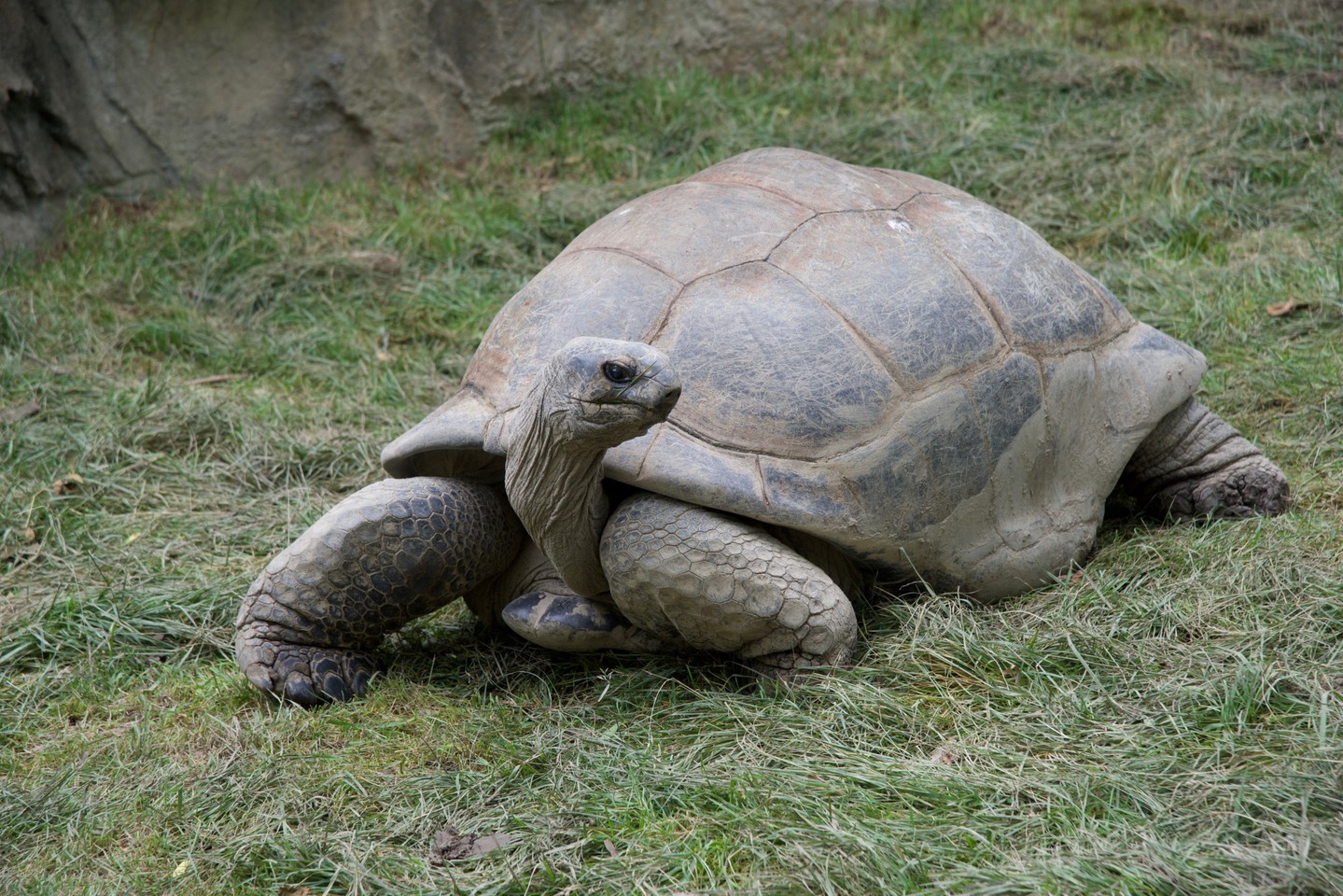- The life and significance of Othello, the Aldabra giant tortoise at the Saint Louis Zoo, and his role as a centenarian ambassador for his species.
- The biology and ecological role of Aldabra giant tortoises as representatives of their native habitats, with emphasis on their life cycle, diet, and unique physical traits.
- The conservation status and challenges facing the Aldabra giant tortoise and efforts to protect these creatures from the threat of extinction.
- The role of zoos, like the Saint Louis Zoo, in wildlife conservation and education, focusing on their contributions to animal welfare, species protection, and public engagement.
- The personal impact of Othello on zoo visitors, staff, and volunteers, underscoring the connection between humans and wildlife in nurturing conservation-minded individuals.
Othello, an Aldabra giant tortoise, was a cherished resident of the Saint Louis Zoo. He passed away recently, marking the end of a life believed to span over a century. Othello’s story begins long before his arrival in the United States in 1938. As a mature adult tortoise then, his early years remain a mystery, but his impact on both human observers and his native ecosystem is well-documented.
Aldabra giant tortoises are emblematic creatures of the Seychelles, specifically the Aldabra Atoll—their exclusive habitat. This location, one of the largest coral atolls globally, is a vital ecosystem and home to thousands of these impressive reptiles. The tortoise’s long lifespan, slow metabolism, and adaptability denote its evolutionarily successful design, honed over millions of years. Aldabra giant tortoises can live for over a century, as demonstrated by Othello. Their diet consists mainly of grasses, leaves, and woody plant matter. This herbivorous diet contributes to seed dispersal and vegetation control in their native habitat, making them crucial in maintaining ecological balance. Their sheer size and slow movement are misleading, as these traits also aid in digging and trampling necessary for aerating soil and fostering new plant growth.
Yet, their existence is threatened, underscoring the importance of conservation efforts. The IUCN classifies the Aldabra giant tortoise as vulnerable. Though relatively stable, protection measures remain pivotal, especially given climate change and human encroachment. Conservation plans focus on habitat preservation and breeding programs, like those supported by global institutions, including zoos.
Institutions like the Saint Louis Zoo contribute significantly to conservation through breeding, research, and public education. By housing species such as the Aldabra giant tortoise, zoos offer insights into the behavior, biology, and conservation needs of these animals. Detailed observations in controlled environments enhance our understanding of health requirements, social structures, and reproduction. These data inform global conservation strategies, underlining zoos’ pivotal roles in wildlife protection.
In this context, Othello’s tenure at the Saint Louis Zoo underscores the integration of care, scientific research, and public interaction in conservation efforts. His disposition endeared him to staff, visitors, and volunteers alike. Through regular public engagements and interactions, Othello raised awareness and appreciation for his species. Such ambassador animals facilitate a deeper emotional connection, inspiring visitors to support wildlife conservation.
By engaging with the community, Othello’s presence served more than just a biological or ecological purpose. Educational programs highlighted through these interactions foster a heightened consciousness about the human responsibility toward preserving biodiversity. Witnessing a centenarian tortoise daily brought the distant and abstract concept of conservation to life, igniting a passion for protecting the vulnerable and educating the public on individual impact in global environmental efforts.
Othello’s contribution echoes beyond his passage. He illustrates the inextricable link between conservation efforts and human action. As we reflect on his life, it is critical to continue advocating and supporting institutions and initiatives poised to make lasting conservation progress.
The story of Othello extends beyond his physical presence, resonating as a reminder of the influence each organism has within the environment and upon human society. By visiting such magnificent creatures, society becomes more aware of its role in safeguarding the planet. It is through the legacy of ambassadors like Othello that the message of conservation finds a port in the heart of every visitor, staff member, and supporter of the preservation of our natural world.
*****
Source Description
It is with incredible sadness that we share the passing of Othello, one of our resident centenarian Aldabra giant tortoises (Aldabrachelys gigantea.) Othello was humanely euthanized on Tuesday due to declining health from a gastrointestinal issue.
While we don’t know his exact age, Othello was thought to be one of the oldest animals at the Saint Louis Zoo. Othello and Ray, another Aldabra giant tortoise still living at the Zoo, arrived in the U.S. as mature adults in 1938. Since it takes several decades for Aldabra giant tortoises to reach full size, Othello was well over 100 years old at the time of his passing.
Othello and Ray joined the Saint Louis Zoo from another accredited zoo in 2004. Othello was beloved by Zoo guests and employees during the 20 years since his arrival. He had a warm, engaging nature and regularly sought out interactions with people. Othello was a guest favorite during our public tortoise tours, often delighting visitors by eagerly accepting carrots—one of his favorite treats. He was also known to recognize his keepers, frequently seeking them out for attention. Keepers always readily reciprocated and loved spending time with him, especially when he stretched out his neck for gentle scratches.
Othello served as an important ambassador for his species, which is considered vulnerable to extinction and is among the last remaining species of giant tortoise on Earth. Aldabra giant tortoises are native to the Aldabra Atoll in the Seychelles, one of the largest coral islands in the world. His long life and presence in human care helped to raise awareness about the conservation needs of his species and the unique ecosystem that these tortoises inhabit.
Thank you to all the keepers, staff, volunteers and guests who knew and loved Othello over the years. He was a beautiful, old soul who reached millions of people, and he will be missed terribly.


